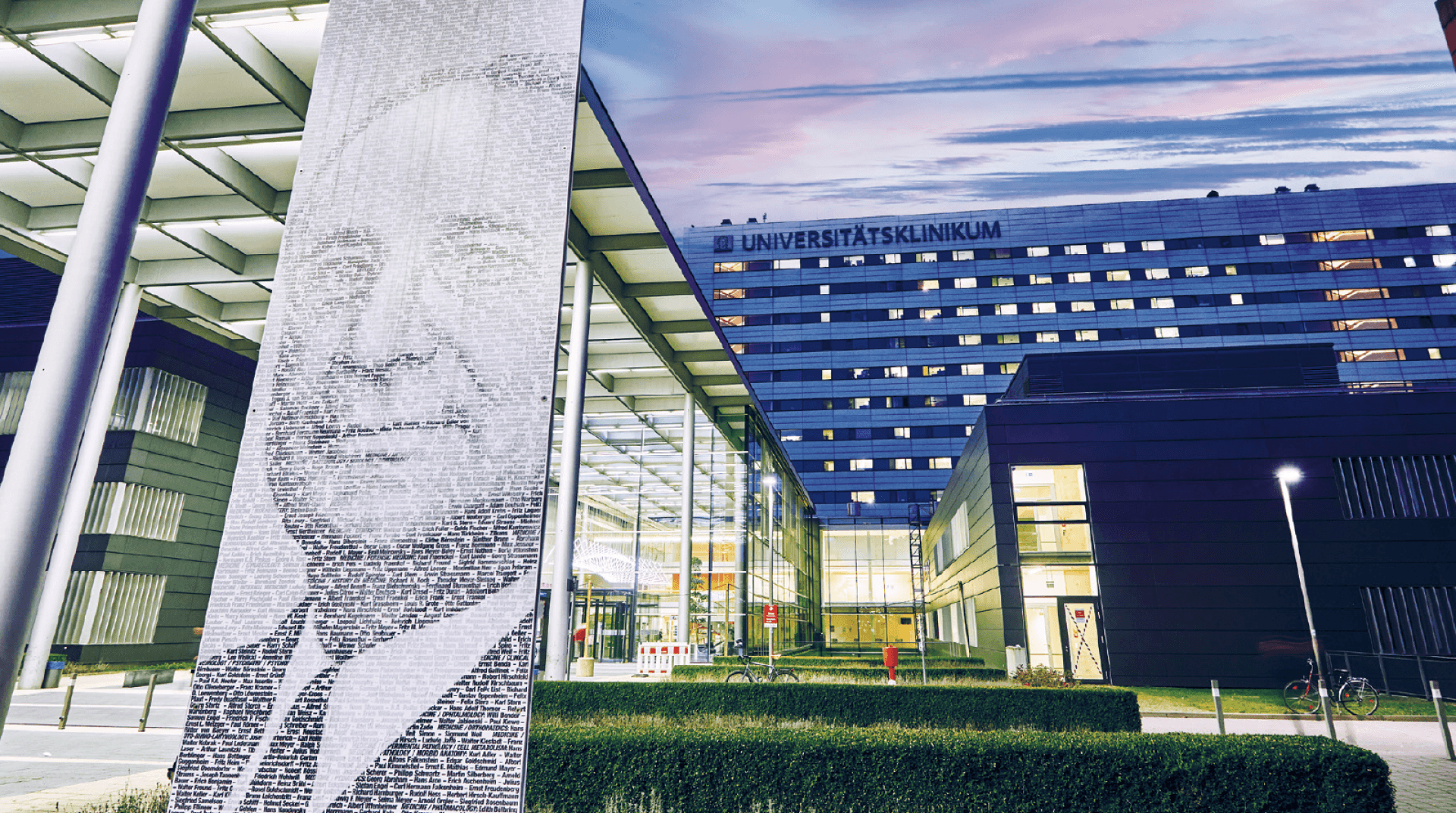
The future of Europe’s workforce in a challenging VUCA landscape
Europe’s workforce is at a crossroads. Global competition is intensifying, technology is evolving at breakneck speed, and traditional ways of working are being upended. While Europe has long been celebrated for its cultural diversity and commitment to work-life balance, these strengths alone may not be enough to sustain its competitive edge in the face of unprecedented challenges.
In this shifting landscape, productivity and flexibility have become critical currencies. European workers, who log significantly fewer annual hours than their counterparts in the United States and China, face mounting pressure to close the productivity gap without compromising the region’s values of fairness and well-being. The question is clear: how can Europe redefine its workforce strategy to thrive in an increasingly interconnected and high-pressure global economy?
The 2023 ATOSS Annual Report raises this question with urgency. As CEO Andreas F.J. Obereder warns, “Europe’s competitive position is in jeopardy. If we don’t take corrective action, we – as a continent – will be left behind.” These words are a wake-up call to policymakers, business leaders, and workers alike, highlighting the need for bold strategies to foster innovation, adaptability, and resilience.
The productivity gap: A data-driven analysis
Europe’s productivity levels reveal a complex challenge when compared with major global economic players such as the United States and China. While Europe is renowned for its focus on work-life balance, data shows that European workers put in significantly fewer hours annually than their counterparts in these countries.
Annual working hours comparison
- Europe: According to OECD data, Germany — one of Europe’s largest economies — reported an average of 1,340 working hours per worker in 2022.
- United States: Workers in the U.S. averaged approximately 1,810 hours annually during the same period. (Source: Wikipedia)
- China: While data for 2022 is unavailable, estimates from 2017 suggest Chinese workers averaged 2,174 hours per year. (Source: Wikipedia)
Percentage differences
- Germany vs. United States: German workers put in about 26% fewer hours annually than U.S. workers.
- Germany vs. China: The disparity is even more pronounced, with German workers logging approximately 38% fewer hours than their Chinese counterparts.
The differences in annual working hours reflect deeper structural and cultural variations across these regions. Here’s what these figures suggest:
1. Productivity focus vs. hourly input
Germany’s shorter working hours highlight its focus on efficiency and productivity rather than sheer input. European nations often rely on automation, process optimization, and skilled labor to achieve economic output comparable to countries with longer working hours.
In contrast, the U.S. and China emphasize longer working hours, reflecting cultural attitudes toward work and differing economic systems. These hours are often seen as necessary to maintain competitiveness in industries driven by volume and speed.
2. Cultural and policy factors
Europe’s emphasis on work-life balance stems from strong labor protections, shorter workweeks, and mandated paid leave. This approach prioritizes employee well-being, creating healthier and more sustainable work environments. However, it raises questions about how to sustain competitiveness in fast-paced global markets.
China’s longer hours are rooted in its rapid development priorities and cultural norms around hard work, often typified by the "996" work culture (9 a.m. to 9 p.m., six days a week). Similarly, the U.S. work culture values hustle and extended hours, particularly in industries like technology and finance.
3. Challenges of competitiveness
While shorter hours foster worker satisfaction and well-being, they pose potential risks in industries where innovation and adaptability are key. European economies must address how to compete effectively against countries with longer working hours while maintaining their hallmark focus on work-life balance.
The gap in working hours highlights a pressing question: How can Europe leverage efficiency, innovation, and advanced workforce development to remain globally competitive?
4. Opportunity for transformation
Europe’s approach offers a unique opportunity to redefine productivity. By focusing on upskilling, technological integration, and innovation, European countries can enhance output without extending work hours. Policymakers and businesses must work together to ensure reduced working hours translate into sustainable productivity gains, helping Europe remain a leader in a VUCA world.
Pioneering workforce innovation at Frankfurt University Hospital
In the heart of Frankfurt, a remarkable transformation is taking place — one that sets a new standard for resilience and adaptability in the volatile, uncertain, complex, and ambiguous world of healthcare. Frankfurt University Hospital, a hub of medical excellence since 1914, has embraced a bold vision: to harmonize cutting-edge workforce management with exceptional patient care while enhancing the lives of its 7,500 employees.
This is not just a story about technology. It’s about pioneering a model where innovation meets empathy, creating a blueprint for how organizations can thrive in the face of constant change.
The challenge: Balancing complexity and care
The modern healthcare environment epitomizes the challenges of a VUCA world. Hospitals must navigate shifting regulations, unpredictable patient volumes, and the ongoing pressure to deliver exceptional care with limited resources. Frankfurt University Hospital, home to 33 specialist clinics and 20 clinical institutes, faced these challenges head-on.
The question was clear: How could they reconcile the growing complexity of healthcare delivery with the equally vital need to care for their employees?
The solution: A digital workforce revolution
Enter ATOSS Medical Solution, a digital workforce management platform that has transformed the way Frankfurt University Hospital operates. By leveraging the power of real-time data, predictive scheduling, and transparent communication, the hospital has reimagined workforce management in a way that benefits both patients and staff.
Key innovations:
- Empowering employees through transparency
Employees now have access to a self-service platform where they can:
- Submit shift preferences digitally.
- Check holiday availability in real time.
- Review duty schedules and request adjustments.
This transparency empowers employees to balance their professional and personal lives more effectively, boosting satisfaction and reducing stress.
- Tailored staffing to meet patient needs
With ATOSS, staffing requirements are dynamically linked to patient occupancy and severity levels. By integrating data from the hospital’s information systems, personnel needs are forecasted in advance, ensuring adequate coverage without overburdening staff.
- Flexibility through stand-by pools
Stand-by pools provide a buffer against sudden absences, offering employees tailored working time models that meet both personal needs and organizational demands. This flexibility enhances morale while maintaining operational efficiency.
- Proactive workload management
The hospital uses advanced analytics to identify potential stress points in staffing. When workloads exceed acceptable thresholds, compensation measures like additional pay or time off are automatically triggered, ensuring fairness and reducing burnout.
The Impact: Resilience and agility in healthcare
Frankfurt University Hospital’s embrace of ATOSS Medical Solution has yielded transformative results:
- Enhanced employee satisfaction: Transparent scheduling and self-service tools have elevated employee autonomy and trust, making the hospital an attractive workplace.
- Improved patient care: Tailored staffing ensures that each shift is adequately covered, enhancing the quality and consistency of care.
- Adaptability to change: By integrating flexibility into workforce planning, the hospital has built a system that can respond dynamically to fluctuations in patient demand and unforeseen challenges.
A model for the future
In an industry often constrained by rigid systems and limited resources, Frankfurt University Hospital has taken the first step toward a more adaptive and human-centric approach. This pioneering work sets a precedent not just for healthcare but for any organization operating in a VUCA world.
By blending innovation with compassion, Frankfurt University Hospital is showing how technology can be a powerful enabler of resilience. It’s a lesson for all industries: in the face of uncertainty, those who lead with purpose, flexibility, and a focus on people will set the standard for the future.

Source: ATOSS Customer Frankfurt University Hospital | ATOSS Annual Report 2022
The broader implications
The productivity gap has far-reaching consequences for Europe:
- Economic output: Lower productivity per worker limits Europe’s ability to drive economic growth and innovation.
- Global standing: Countries with higher productivity are better positioned to attract investment and maintain economic resilience.
- Workforce dynamics: The gap underscores inefficiencies in how time and resources are utilized across industries.
Flexibility as a strategic advantage
One of the key solutions to Europe’s workforce challenges lies in embracing flexible working time models. Flexibility is not just about accommodating employees’ needs — it’s also about aligning workforce operations with fluctuating business demands. By leveraging flexibility, organizations can optimize productivity while fostering a more engaged and satisfied workforce.
Key benefits of flexibility
- Adapting to market volatility: Flexible scheduling enables companies to scale their workforce in response to seasonal or economic shifts without sacrificing efficiency. For instance, during peak holiday seasons, retailers can dynamically allocate resources to high-demand areas.
- Enhancing employee well-being: Workers with control over their schedules are more likely to feel engaged and satisfied, directly boosting productivity and reducing turnover.
- Attracting top talent: Flexibility is increasingly seen as a non-negotiable feature of desirable workplaces, particularly among younger generations who prioritize work-life integration.
The role of workforce management technology
To implement flexible working time models effectively, organizations must leverage advanced workforce management tools. Platforms like ATOSS Workforce Management enable businesses to navigate the complexities of scheduling, resource allocation, and compliance with labor laws while empowering employees to take control of their work schedules.
How workforce management tools drive productivity
- Data-driven insights: Predictive analytics allow managers to anticipate staffing needs, reducing downtime and optimizing operations. For example, logistics companies can use analytics to allocate resources based on historical demand patterns.
- Real-time adjustments: Dynamic scheduling tools enable organizations to respond quickly to changing demands, such as sudden increases in production needs or employee absences, ensuring operational continuity.
- Employee empowerment: Integrating employee preferences into scheduling decisions fosters trust and engagement, mitigating risks of burnout or disengagement.
A call to action
The urgency of enhancing productivity and flexibility in Europe’s workforce is supported by compelling data:
- Engagement impact: Gallup’s State of the Global Workplace Report reveals that only 21% of employees worldwide are engaged at work, highlighting a significant opportunity to improve workplace satisfaction and performance.
- Economic losses: Disengagement costs the global economy approximately $8.8 trillion annually, equivalent to 9% of global GDP. In Europe, where engagement levels are slightly below the global average, this represents a substantial economic drag.
- Efficiency gains: Studies by McKinsey show that companies implementing flexible working models see up to 20% productivity increases, underscoring the tangible benefits of strategic workforce management.
These statistics paint a clear picture: Europe cannot afford to delay in adopting innovative workforce strategies.
Europe’s path forward: Collaboration and innovation
Addressing Europe’s productivity challenges requires a united effort across industries, governments, and organizations. Policymakers must create frameworks that encourage innovation in workforce management while protecting employee rights. Companies, in turn, must invest in strategies and technologies that enhance efficiency and competitiveness.
Actionable steps for transformation
- Redefine productivity metrics: Shift the focus from total hours worked to outcomes and efficiency, fostering a culture of smart work rather than hard work.
- Support digital transformation: Encourage widespread adoption of workforce management platforms to streamline operations and empower employees.
- Promote public-private partnerships: Collaborations between governments and businesses can drive innovation, offering subsidies or incentives for companies that invest in flexible working models.
Strengthening Europe’s workforce for the future
Europe’s economic future hinges on its ability to adapt to changing global dynamics. As Andreas F.J. Obereder emphasizes, the time for action is now. By enhancing productivity through flexible work models and innovative workforce management strategies, Europe can reclaim its competitive edge and position itself as a leader in the global economy.
Flexibility and efficiency are no longer optional — they are essential. For organizations ready to embrace this transformation, the rewards are significant: a more engaged workforce, greater resilience to economic shifts, and a future defined by sustainable success.
Talk to an ATOSS expert